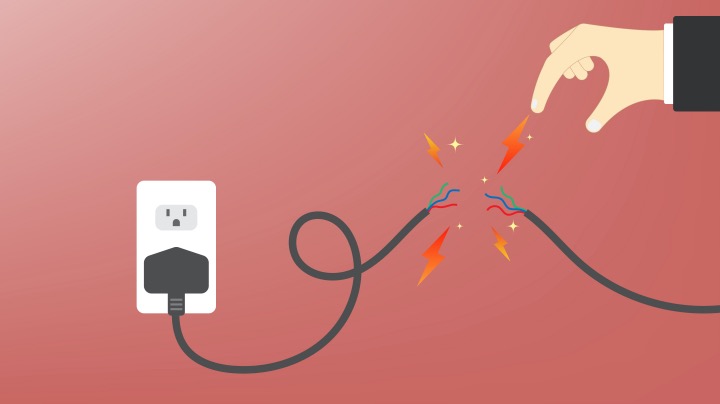Dependable technical support for electrical industry professionals.
Wiki Article
Top Tips for Effective Electrical System Troubleshooting
Troubleshooting electric systems calls for a methodical technique, grounded in an extensive understanding of electrical principles and safety protocols. By acquainting oneself with circuit components, using important devices, and adhering to a structured evaluation approach, experts can efficiently identify and solve issues. However, the subtleties of reliable troubleshooting prolong beyond simple technical expertise; comprehending how to document searchings for and prioritize security can dramatically affect end results. As we discover these crucial elements better, it comes to be clear that mastering this procedure is not just beneficial however important for success in the field.Understand the Basics
Comprehending the fundamentals of electrical systems is vital for reliable troubleshooting, as a solid structure permits professionals to diagnose and settle concerns more effectively. A comprehensive grasp of electrical principles, such as voltage, existing, resistance, and power, is essential in recognizing the origin of troubles. Voltage is the electric possible distinction that drives existing via a circuit, while resistance opposes the circulation of current, impacting the general performance of the system.Knowledge with circuit elements, including resistors, capacitors, diodes, and switches over, is additionally vital. Each component plays an unique duty in circuit behavior and can influence efficiency when malfunctioning. Furthermore, comprehending series and parallel circuit setups is essential, as these arrangements affect the distribution of voltage and existing within the system.
Professionals need to be conscious of prospective threats, such as shock and brief circuits, to apply safe troubleshooting techniques. By understanding these fundamental principles, technicians improve their capacity to carry out reliable diagnostics and repair services, ultimately leading to improved performance and reliability of electric systems (electrical system troubleshooting).
Gather Necessary Devices
Effective troubleshooting of electric systems requires the appropriate collection of tools to detect and solve issues precisely. Vital devices include a multimeter, which gauges voltage, present, and resistance, enabling for accurate assessments of electric parts.Additionally, protected hand devices such as screwdrivers, pliers, and wire strippers are important for safely manipulating electrical connections. It is also a good idea to have a circuit tester accessible to verify the presence of voltage in outlets and wires. For even more facility systems, a thermal imaging cam can aid discover overheating elements, suggesting potential failures.

Comply With a Systematic Strategy
Having gathered the ideal tools, the following action in troubleshooting electrical systems is to comply with a methodical strategy. A systematic approach guarantees that service technicians can recognize mistakes effectively and precisely, reducing downtime and protecting against unnecessary repairs.Begin by reviewing the system's schematic diagrams and specifications. Comprehending the layout and operational criteria will certainly provide context for identifying issues. Next off, separate the problem area by using a process of elimination. This entails checking each part methodically, beginning from the power resource and working in the direction of the tons.
Use screening tools, such as multimeters and oscilloscopes, to gather objective data regarding voltage, present, and resistance at numerous factors within the system. This empirical proof will certainly assist your troubleshooting efforts and help to confirm or remove potential root causes of failure.
Furthermore, consider ecological variables that may affect the system's performance, such as temperature fluctuations or moisture ingress. A detailed inspection of electrical wiring, links, and components will make sure that all possibilities are accounted for.
Paper Your Findings
Detailed paperwork is essential in the troubleshooting process of electric systems. This method not just help in comprehending the root reason of the trouble but also offers as a referral for future troubleshooting efforts.
Furthermore, preserving a log of parts replaced or repair services carried out is invaluable. This info sustains supply management and can aid assess the long life and reliability of details elements.
Inevitably, the documentation procedure should be thorough yet concise, allowing very easy retrieval and review - electrical system troubleshooting. By prioritizing detailed documents, professionals can create an important understanding base that not just help in existing troubleshooting yet also equips future maintenance initiatives, thereby improving overall system integrity

Prioritize Safety And Security Steps
Recognizing the integral risks connected with electrical systems is important for making certain safety during troubleshooting. Electrical shock, burns, and equipment damage are simply a few of the potential threats that technicians face. Prioritizing safety measures is not only a legal obligation but additionally a moral imperative that safeguards both the service technician and the surrounding setting.Prior to starting any kind of troubleshooting job, service technicians must put on suitable personal safety equipment (PPE), including protected gloves, shatterproof glass, and flame-resistant clothing. Ensuring that the job location is completely dry and without mess can considerably minimize the threat of mishaps. Additionally, it is important to de-energize circuits before starting any type of work, confirming that they are not endure using a multimeter or voltage tester.
Establishing clear communication methods with group participants is likewise important; this makes certain that every person is aware of potential risks and the condition of the electrical system being worked with. Having an emergency situation reaction strategy in location can prove invaluable in the event of an incident. By prioritizing precaution, service technicians can efficiently minimize dangers and cultivate a safer office.
electrical system troubleshooting
Conclusion
Reliable electrical system troubleshooting depends on a thorough understanding of basic principles and a methodical method. Focusing on security measures makes sure the well-being of people entailed and the integrity of the electrical system.Report this wiki page